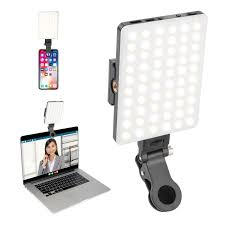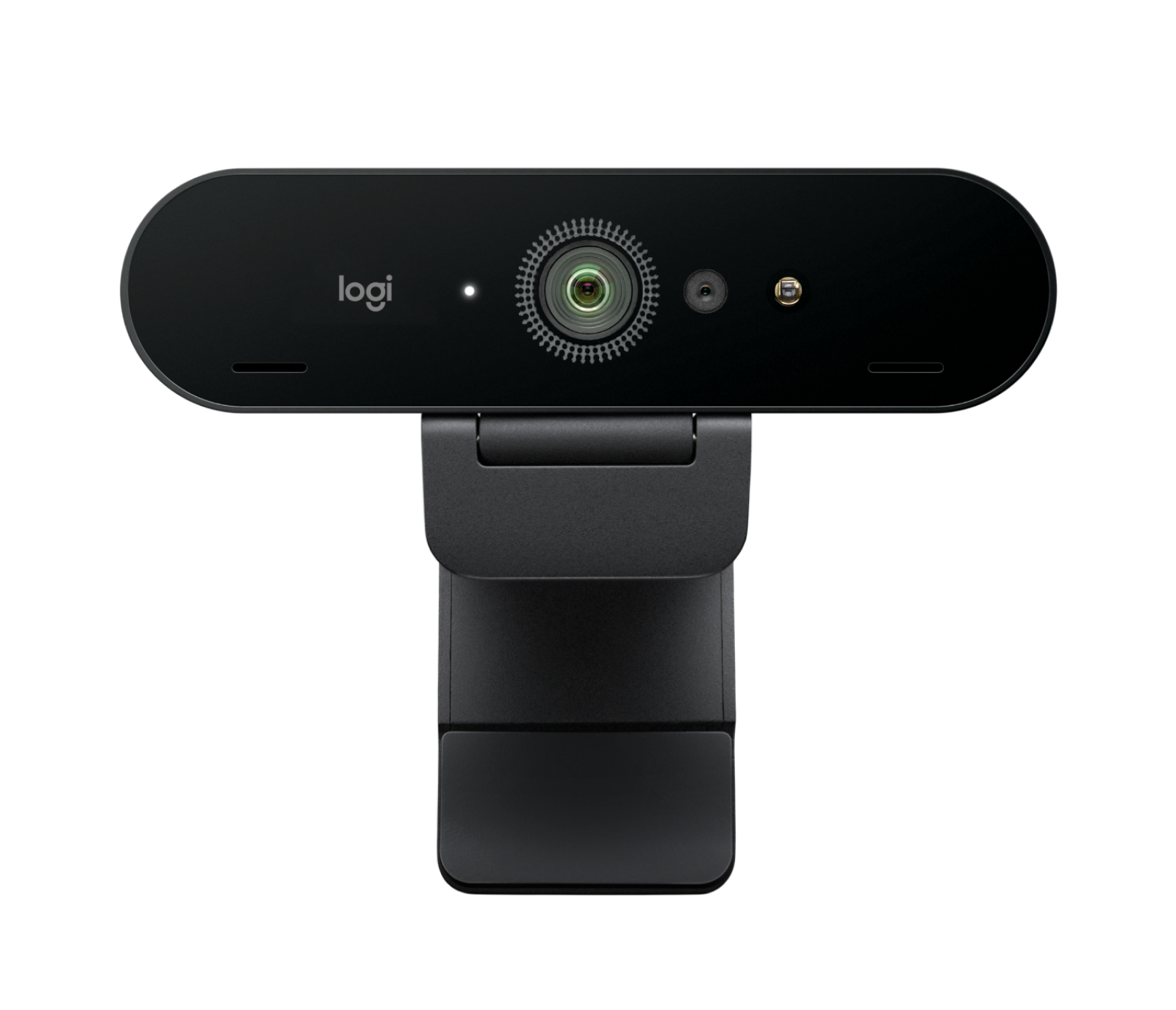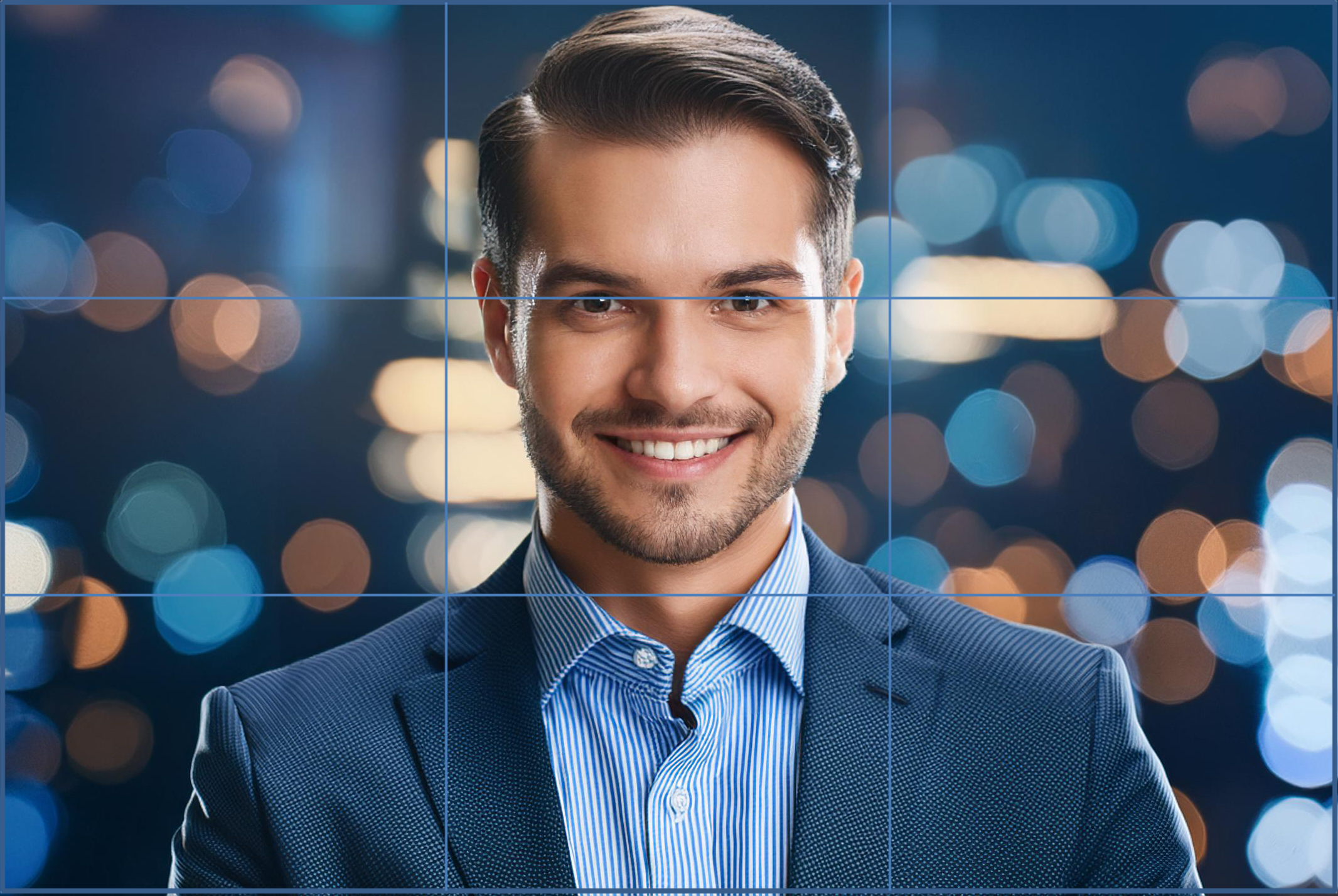

Daylight
1. Light
The difference between daylight (natural light) and lamplight (artificial light) is immense. Daylight is bluer. It gives you a natural complexion and a calm appearance. Lamplight, on the other hand, is often more yellow and makes you look less healthy. It can also cause weird shadows if the lamp is not positioned properly. A fluorescent beam above your head creates drop shadows under your eyebrows and eyes.
To get lamplight right, professional film makers use three-point lighting: key light, fill light and back light. It is quite complicated to properly install artificial lighting, so our recommendation would be: use daylight.
Tip 1: avoid ‘mixed light’. Turn off the lights in your study or office and see what that does to the image. If you only use daylight, your camera will know what the white balance should be, and you will get a beautiful complexion.
Tip 2: if a shadow still falls on your face while you are using daylight, make the shadow disappear with a LED lamp with white light. This is called a fill light. Be careful with glasses, you don’t want to see a reflection from the lamp.

Fill light
2. Camera
Most built-in cameras on PCs and laptops have an automatic white balance. This means that they correct the color of the light to an average. The downside is that they do that continuously. So, if you move your head, more or less light may fall on the camera and it will adjust that. The effect is that you get an image that goes from bluish to yellowish, for example. That’s distracting.
A webcam often comes with software that allows you to set settings such as white balance or exposure. Then the camera no longer corrects this automatically. A reliable webcam is the Logitech Brio Ultra HD. It comes with this software.

Our favorite: Logitech Brio
3. Composition
The best composition is creted by positioning your webcam at eye level and placing your eyes on the top line of the Rule of Thirds in the image.
Eye level
Professional film makers play with eye level to express dominance or submissiveness. You can make someone look taller or smaller by not filming at eye level but slightly above or below. Even if it’s a little bit, you subconsciously get a subtle message. So, to appear neutral and trustworthy, place your camera at eye level, or your eyes at camera height.
How do you do this? Raise or lower your office chair, or place your laptop on a stand. You might as well stand up and use a standing table. Regardless of your solution, try to create a stable solution, so that the image is not shaking if you touch your laptop.
Rule of Thirds
If you were to place a tic tac toe grid over your image, your eyes should be on the top line. This rule of thirds, or golden ration, gives paintings a balanced composition and can be found in a wide range of natural phenomena (from flowers to hurricanes). If you recognize it, you see the rule of thirds on television all the time. It doesn’t matter if you’re close or far from the camera, if you place your eyes on the imaginary top line, it will just look good.

Eye contact
In the in-person setting eye contact is a natural way of connecting. During an online interview this is not necessarily the case. Programs such as Zoom, Teams and Webex have built-in software to correct eye position. When you look into the camera, you often look too high. What does work is to drag the window containing the panel, right under the camera. Note: this trick might not work when some panel members join the meeting remotely.
Try this out in a test meeting with someone on Webex. Look at different points on your screen and ask: Am I looking at you now? You can put a sticker on that spot, so you know where to look during your presentation.
Tip 1: If you have placed the webcam at eye level, adjust the lid of your laptop or PC screen so that your eyes are on the top line.
Tip 2: Make sure you can be seen from halfway down your chest to the top of your head. This is called a medium shot.
Tip 3: If you work with written notes, place them close to the camera. Look at the notes occasionally and then make eye contact with your audience again. The viewer is not interested in the top of your head.
Tip 4: presenting while standing is more energetic, both for yourself and for the people who listen to you.